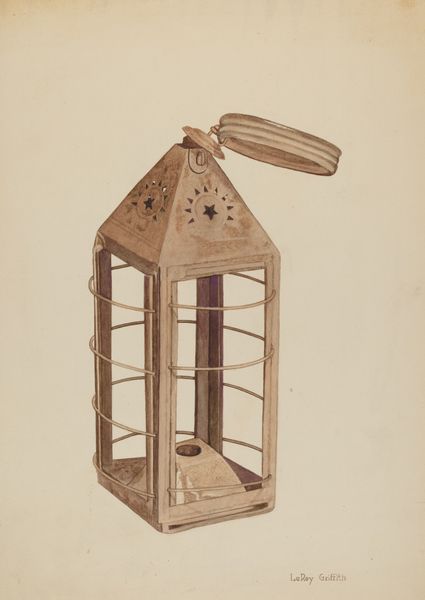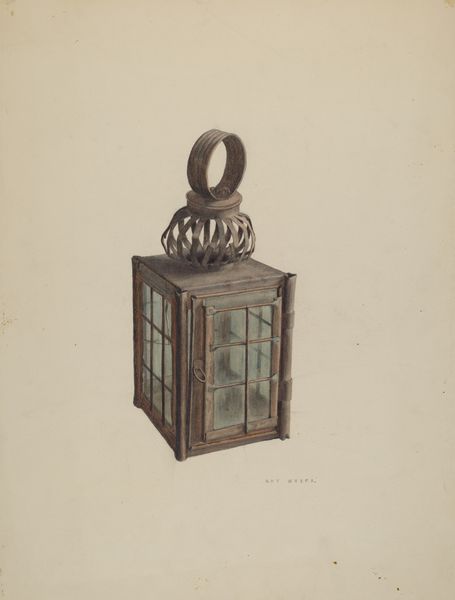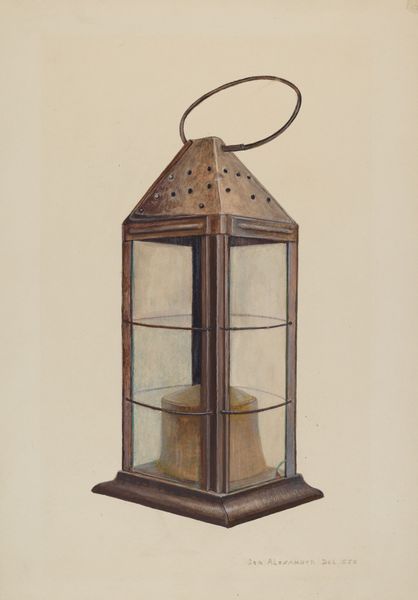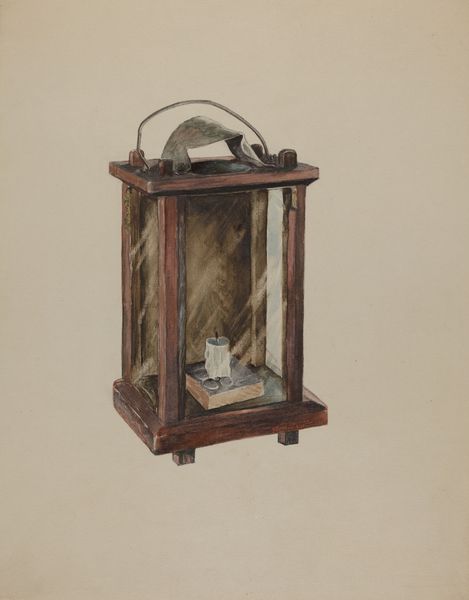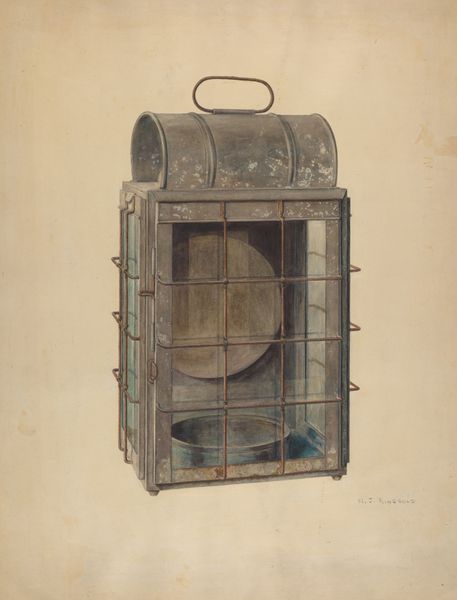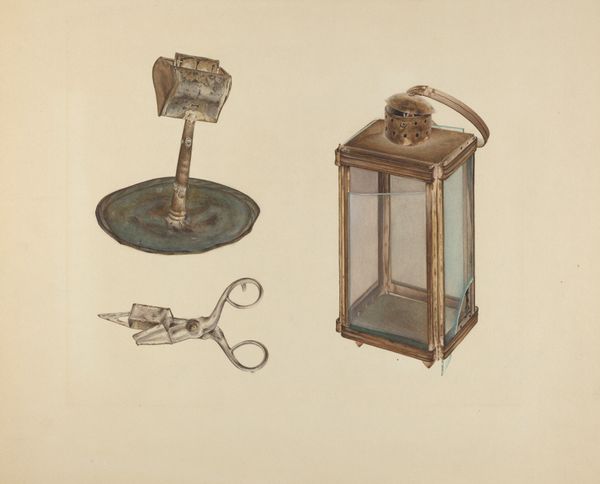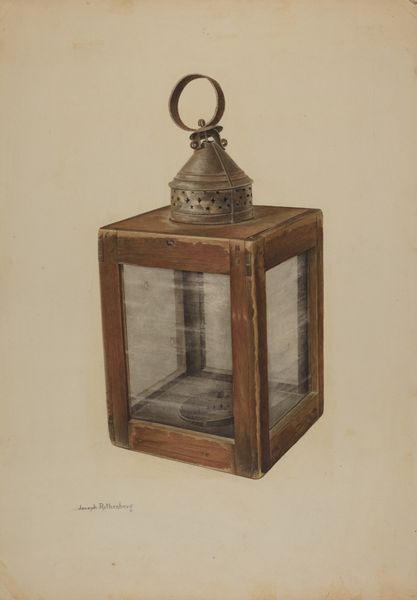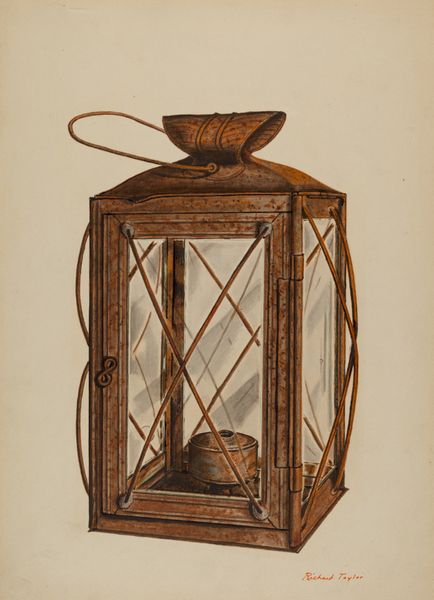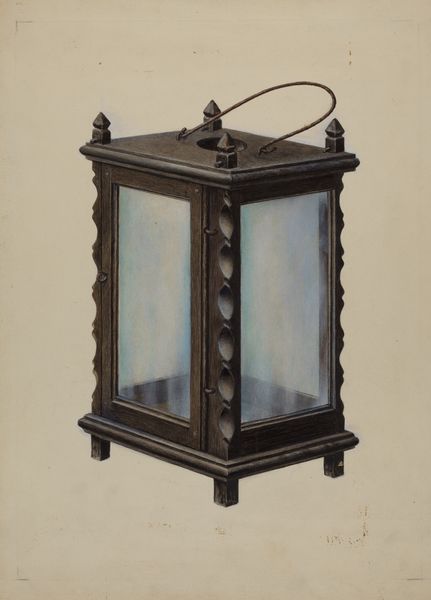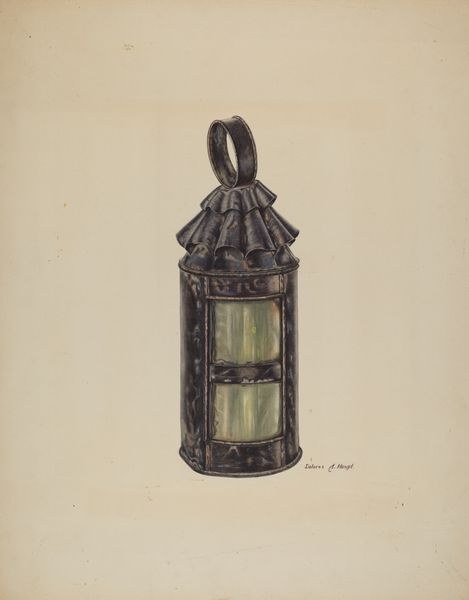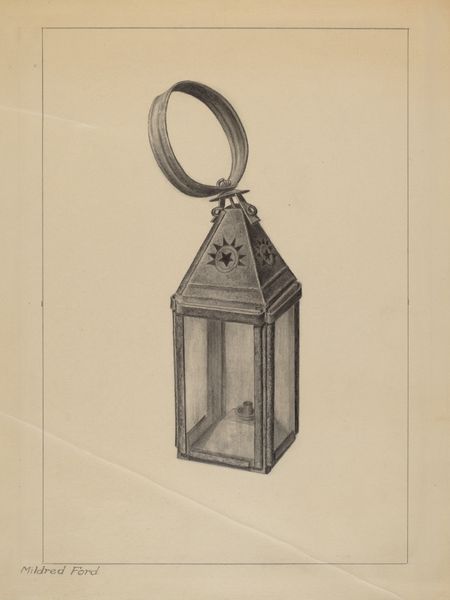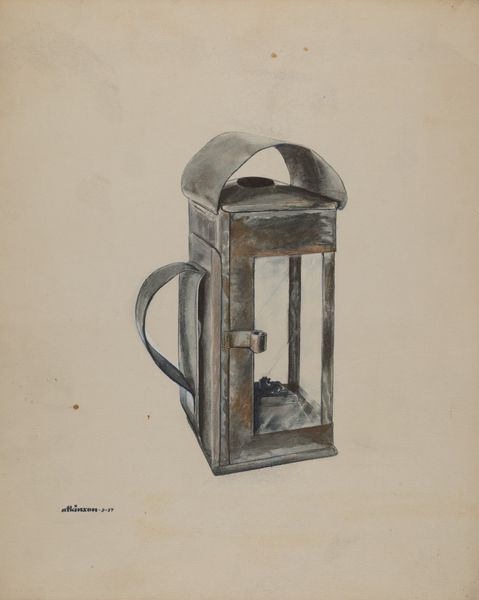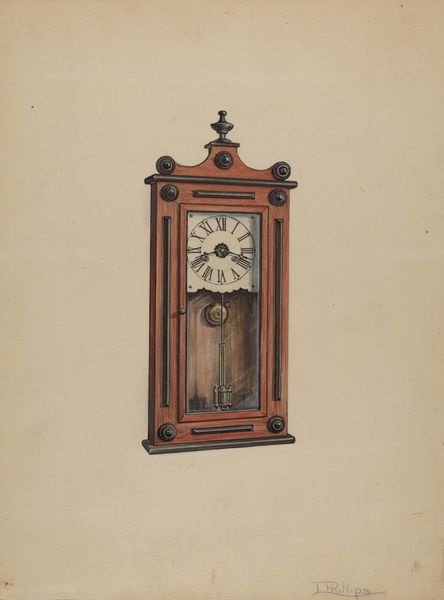
drawing
#
drawing
#
toned paper
#
charcoal drawing
#
possibly oil pastel
#
oil painting
#
coloured pencil
#
underpainting
#
pastel chalk drawing
#
painting painterly
#
watercolour illustration
#
watercolor
Dimensions: overall: 38.2 x 28 cm (15 1/16 x 11 in.) Original IAD Object: 11" high; 4 1/2" wide
Copyright: National Gallery of Art: CC0 1.0
Editor: We're looking at Arthur Mathews' "Lantern," likely created around 1938. It appears to be a drawing, perhaps using charcoal and toned paper. It's such a detailed depiction of an everyday object. What strikes me is how functional and even beautiful the artist has made this seemingly mundane lantern. How do you interpret this work in its historical context? Curator: The choice of subject matter immediately interests me. Lanterns, while utilitarian, played a crucial role in daily life before widespread electrification. Consider the era: the late 1930s, still within the shadow of the Great Depression, with societal shifts driven by technology looming. Depicting a lantern, then, may subtly critique the burgeoning age of artificial light by glorifying craftsmanship and reliance on older means. The drawing becomes a historical document, reminding us of a fading past and perhaps quietly protesting against the social changes wrought by modernity. Do you notice any signs of use? Scratches, maybe? Editor: I do see some slight imperfections, perhaps wear and tear. That detail, as you mentioned, lends a very tangible, real feel to it. I wouldn’t have picked up on the connection to societal anxieties about technology. I assumed its simple, unassuming mood. Curator: Precisely. The drawing elevates this common object, imbuing it with significance, transforming a simple utility item into a cultural artifact. Think about where such an image might be displayed and for whom? How might it challenge the expectations in 1930s exhibitions? Editor: I see your point. It would really disrupt typical exhibition narratives by honoring an everyday item instead of idealizing something aspirational. Thanks, I’ll definitely keep these issues of context in mind. Curator: That kind of contextual consideration transforms viewing art, doesn't it?
Comments
No comments
Be the first to comment and join the conversation on the ultimate creative platform.

